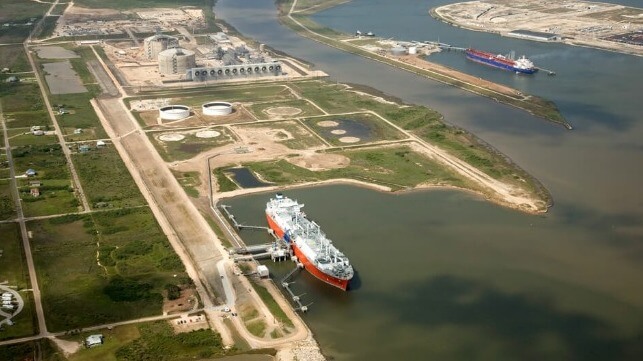U.S. is the Largest LNG Exporter Topping Australia and Qatar

The United States exported more LNG than any other country in the first half of 2023 according to a new report from the U.S. Energy Information Administration (EIA). The government agency that analyzes and reports on the energy markets to inform policy decisions cited the resumption of operations at the Freeport LNG facility as one of the key contributors to the growth in exports in 2023 while numerous additional LNG projects are in the development stage primarily for the U.S. Gulf Coast.
Using data from the French not-for-profit association CEDIGAZ, which is dedicated to natural gas information, the report says U.S. exports grew by four percent in the first half of this year compared to the same period in 2022. The United States exported more liquefied natural gas (LNG) than any other country averaging 11.6 billion cubic feet per day (Bcf/d). In addition, the report highlights that U.S. LNG exports set a monthly record of 12.4 Bcf/d in April as Freeport LNG ramped up LNG production.
Freeport LNG, the second-largest LNG export terminal in the U.S., went offline after a June 2022 explosion. The plant remained offline not completing its first shipments till February 2023 while there were undertaking repairs and upgrades to systems. Management said they would be ramping up operations at least into March 2023 while longer term they are planning to add a fourth train. According to Freeport LNG management, this expansion will allow for the export of an additional 5+ mtpa of LNG, increasing Freeport LNG’s total export capability to more than 20 mtpa of LNG per year.
The U.S. has traditionally been competing with Qatar for the title of the largest exporter, but Australia edged out Qatar this year for the second position according to the data from CEDIGAZ. Australia exported the world’s second-largest volume of LNG in the first half of 2023, averaging 10.6 Bcf/d, followed by Qatar at 10.4 Bcf/d.
Similar to the patterns established in 2022, the EIA cites the strong growth in demand from Europe as the primary market for U.S. gas exports. EU countries and the UK remained the main destinations for U.S. LNG exports in 1H23, accounting for 67 percent (7.7 Bcf/d) of total U.S. exports. Five countries, the Netherlands, the UK, France, Spain, and Germany, imported more than half (6.0 Bcf/d) of total U.S. LNG exports.
European countries have been rushing to develop new import capabilities to make up for the loss of Russian gas. Germany created import facilities chartering a series of FSRUs placed both in the east and western seaports. Finland also chartered a vessel and new facilities opened in Italy and Spain, with countries including Greece working to develop their import facilities using FSRUs. Operations are beginning exports in emerging areas including Egypt and other African countries.
After a mild winter, Europe and the UK ended the 2022–23 heating season with the most natural gas in storage on record, and the region continued importing LNG to rapidly refill its storage inventories in the spring and summer.
In the first six months of this year, Europe and the UK’s LNG imports exceeded imports by pipeline for the first time on record, according to data from Refinitiv Eikon.
Demand remains strong from the European markets and with LNG exports on the rise, a record number of gas carrier vessels are now on order. The backlog to build vessels in South Korea helped China to increase orders for new LNG carriers. Rumors from South Korea indicate the three big shipbuilders are on the verge of a massive order for vessels tied to Qatar’s ongoing expansion which includes the opening of the North Field. Qatar lifted a self-imposed expansion ban in 2021. According to the International Trade Administration, the first phase of Qatar’s North Field project is expected to increase capacity by 43 percent from 77 million tons per annum (mtpa) to 110 mtpa by 2025. The second phase, called the North Field South Project, will further increase the production capacity from 110 mtpa to 126 mtpa, a total 64 percent increase by 2027.
